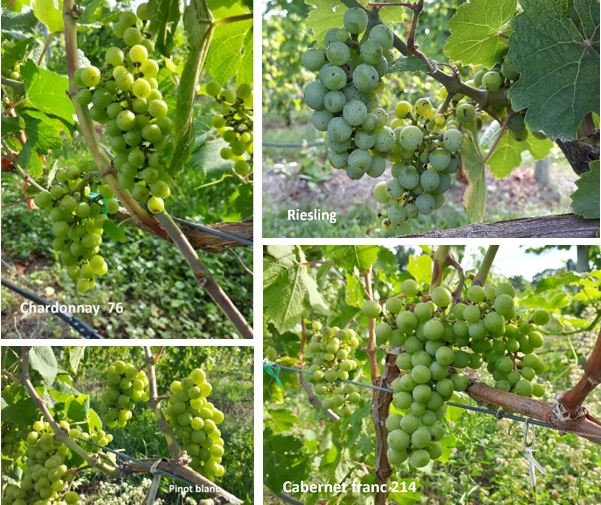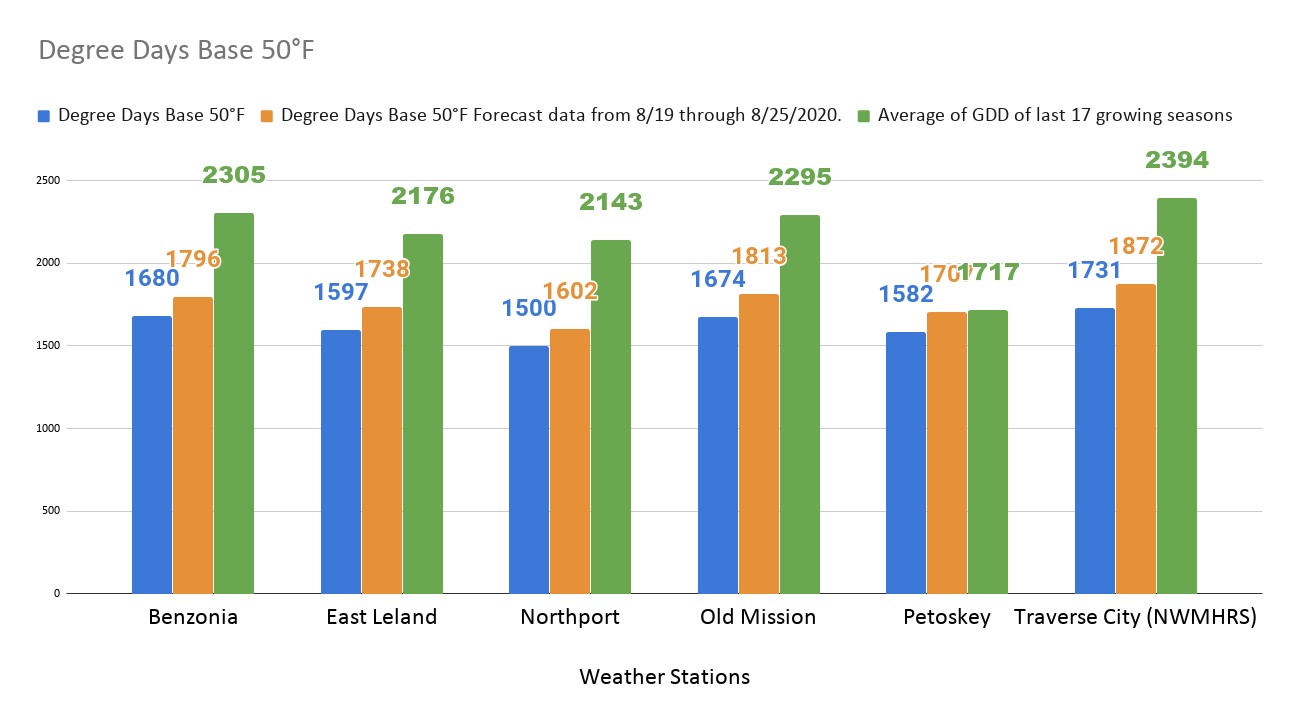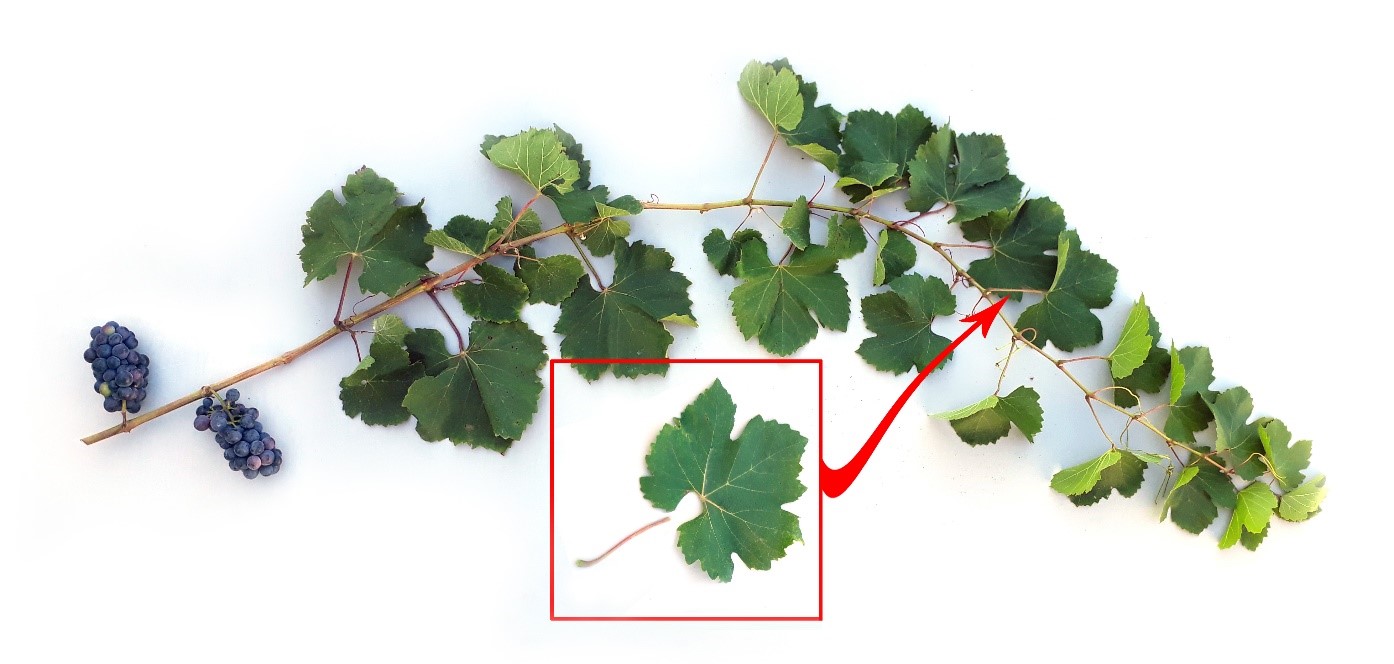Viticultural practices in northwest Michigan at veraison
Meticulous and timely viticultural practices are critical when the growing season is short. Follow this timely information to optimize your vineyards' health, profitability and sustainability.

Variation in grape ripening in northwest Michigan
Timely viticultural practices throughout the growing season optimize the health, profitability and sustainability of the vineyards and improve the quantity and quality of the crops. Currently, most of the grape cultivars are starting veraison (Photo 1), and still some varieties are in bunch closure stage (Photo 2) depending on grape cultivars and grape growing sites.

Brix levels are increasing and the early ripening varieties are close to half of sugar production potential (Table 1).
|
Table 1. Sugar accumulation in different varieties. | |
|---|---|
|
Cultivars |
Degrees Brix in Traverse City, Michigan (Northwest Michigan Horticulture Research Center) |
|
Pinot Noir |
10.7 |
|
Pinot gris |
12.9 |
|
Cabernet franc |
5.8 |
|
Zweigelt |
11.1 |
|
Muscat |
4.1 |
|
Riesling |
4.4 |
|
Madeleine Angevine |
13.2 |
|
Sauvignon Blanc |
7.6 |
As the graph below shows, distribution of summer heat and growing degree day (GDD) are not equal among the northwest Michigan American Viticulture Areas (AVAs).

Viticultural practices
Usually, canopy heading is needed when the berries reach pea size. Close to the end of bunch closure and veraison, topping and cluster zone, leaf removal can increase optimal sunlight and spray penetration inside the canopy. Moreover, opening up the canopy can change vines’ macroclimate and create a less favorable environment for pathogen growth.
Berries at more than or equal to 15 degrees Brix could be very attractive for spotted wing Drosophila (SWD). Monitor for the presence of SWD in vineyards and management should be taken if pest pressure and the risk of SWD oviposition is high and berries are at a susceptible stage more than or equal to 15 degrees Brix). Focus management efforts on varieties preferred by SWD such as Vignoles, Riesling, Seyval, Pinot and Chardonnay as susceptible cultivars.
The grape berry moth (GBM) is a key pest of grapes and the first generation of the grape berry moth feed on young grape clusters. Before and after veraison, larvae feed inside berries. Grape berry moth feeding damage predisposes berries to infection by Botrytis and sour rots and can attract fruit flies, wasps and ants. Grape berry moth could be monitored by using pheromone-baited traps and looking for webbing in the clusters.
Sour rot is a late-season fruit injury caused by birds, diseases and insects. Any injury may predispose berries to an invasion of a variety of fungi, yeasts and acetobacter bacteria, which may lead to rot. Sour rot usually begins after veraison when berries accumulate more than 10 degrees Brix sugar.
Canopy management plays a very important role in Botrytis control. In order to reduce the pressure of Botrytis at veraison through preharvest, early leaf removal and active fungicides should be applied just before berry touch each other. Resistance is common, so rotate fungicide classes and apply fungicides with different mode of actions. Use Captan quite often during the season to further suppress this disease.
Grapevine nutrient management: Petiole sampling
Nutrition status of a grapevine is important in producing good yields and high quality in grape production. This is a brief protocol that focuses on sampling methods to assess the nutritional status of wine, juice and table grape vineyards.
Analysis of grapevine nutrients status is generally conducted by collecting grapevine petioles at flowering or at the end of veraison. The petioles will provide a good analysis of nutrient levels in the vine, and this analysis is typically done in analytical laboratories.
A representative sample from each vineyard typically involves collecting approximately 60 to 90 petioles samples. Each sample must be from the same varieties, rootstock, age and vigor. Avoid collecting samples from any unhealthy grapevines. Generally, plants infected with disease or otherwise unhealthy vines will provide a poor representation of vine health and nutrition.
Collect the sample between 6 a.m. and 10 a.m. when soil and leaf moisture are optimal. Keep the samples in labeled paper bags (not plastic bags) and send them to the analytical laboratory early in the week. Do not send the samples later in the week when they can potentially sit in the lab over the weekend.
One of the best times to conduct nutrition analysis of the grapevine is at the end of the veraison. At this time, the sampling has to be conducted on the most recently (youngest) mature leaves that are fully green and just about full size (Photo 3).

In order to increase the precision of the nutrition analysis, avoid taking samples from lateral shoots because the composition of the petioles may vary.
In varieties with very small petioles, such as Pinot Noir or Chardonnay or some other hybrid varieties, you may need to collect about 80 or 90 of petioles. Additionally, in varieties with really big leaves and big petioles, such as Concord, you may only need about 50 or 60 leaves or petioles.



 Print
Print Email
Email